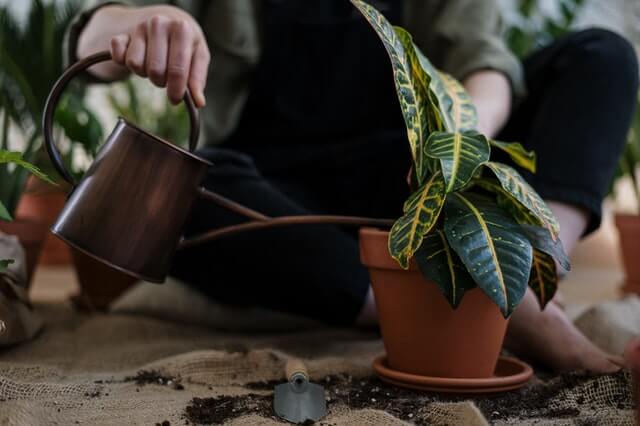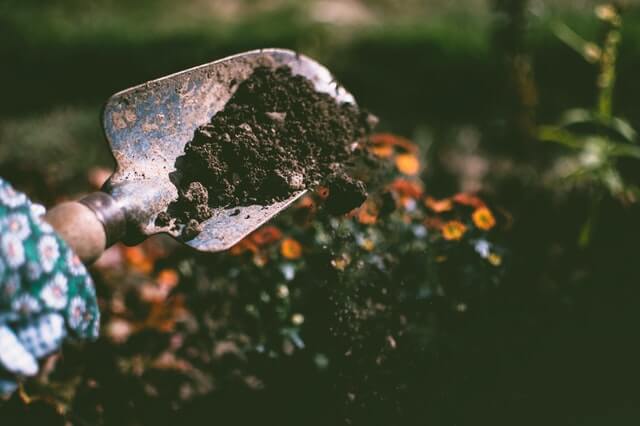Thyme
Perennial herb with a spicy taste
Nutritional, Culinary & Medicinal Uses

Culinary: Thyme can be used as a garnish or made with roasted potatoes, sauteed carrots, in tea, with sauteed mushrooms, with lemon in a sauce, or as a seasoning [3].
Medicinal Uses: Thyme is filled with minerals, phytonutrients, and vitamins. It is highly considered for its “antiviral, antibacterial, antifungal, and antiseptic” actions. “Potassium, iron, calcium, manganese, magnesium and selenium are concentrated in the leaves, and the main constituent of the oil extracted is thymol. Thymol is an important phenolic component mainly responsible for thyme’s antioxidant activity. The thyme’s flowered stem contains flavonoid derivatives such as apigenol and luteolol, phenolic acids such as cafeic and rosmarinic acids, and tannins” [5].
Nutritional: Thyme has been used to treat malaria [5], to treat sore throats as a water gargle mixture, cavities and gingivitis as a mouthwash, acne as a tincture, digestive upsets, lice scabies, and crabs as oil mixed with coconut oil, skin inflammatice as a poultice made into a paste, and warts as an oil. Thyme is anti-viral, anti-parasitic, and anti-fungal [4].
How to Cultivate and Harvest
Planting: Thyme should be grown from seed either indoors or outside under a glass cover until about 2-3 inches high. Then the plants are set 12 to 18 inches apart in rows 3 feet apart. Start new plants every 3-4 years, as old plants become too woody [6].
Harvesting: Cut 5-6 inches off the top of the plants for use, sometimes 2 or more times a year [6].
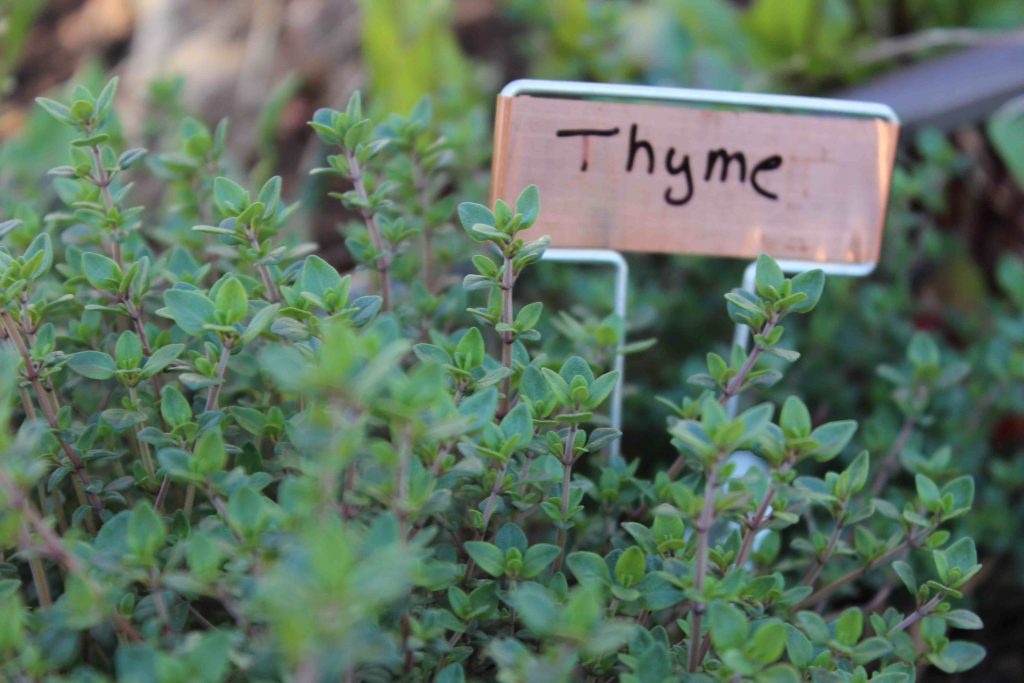
Preservation
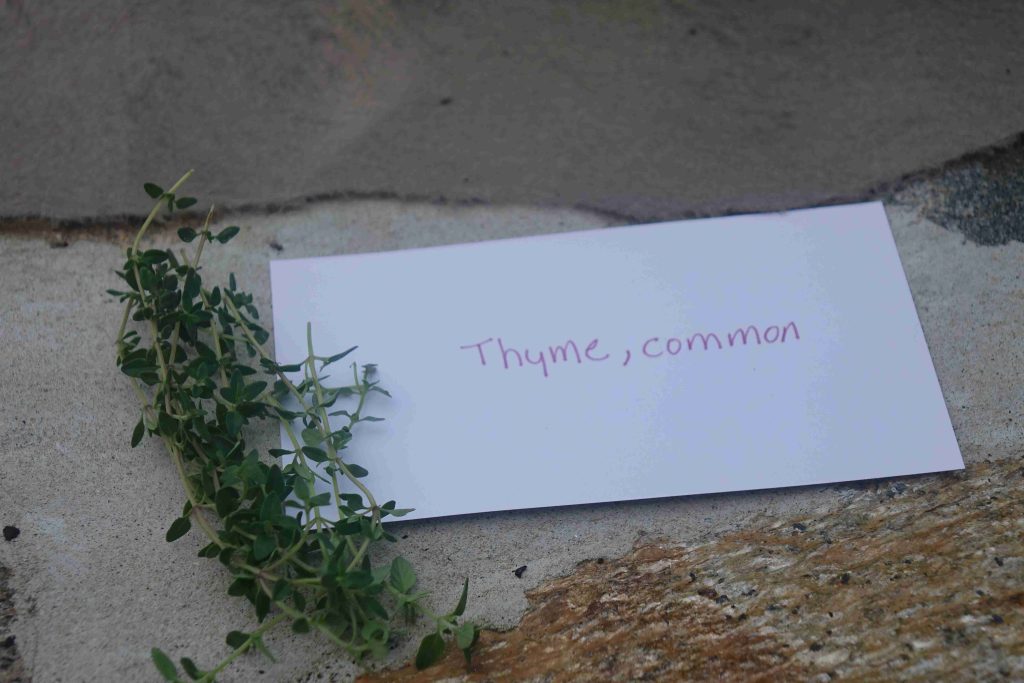
Thyme can be dried on a screen in a well-ventilated room, after which the leaves and flowers can be stripped off and stored in a sealed container [6]. You can also freeze the thyme in little ice cubes to put into soups [7]. You can also use a dehydrator to dry them, likely on the normal herb temperature setting.
History
The recorded use of thyme extends back to the embalming of the ancient Egyptians [2]. The plant is also referenced numerous times in the writings of the Roman naturalist, Pliny [1]. The Greeks and Romans were well-disposed toward thyme for its antiseptic abilities. Roman and medieval soldiers made use of it before battle, and there is a Christian legend that it was present in the crib of the Christ child [2].
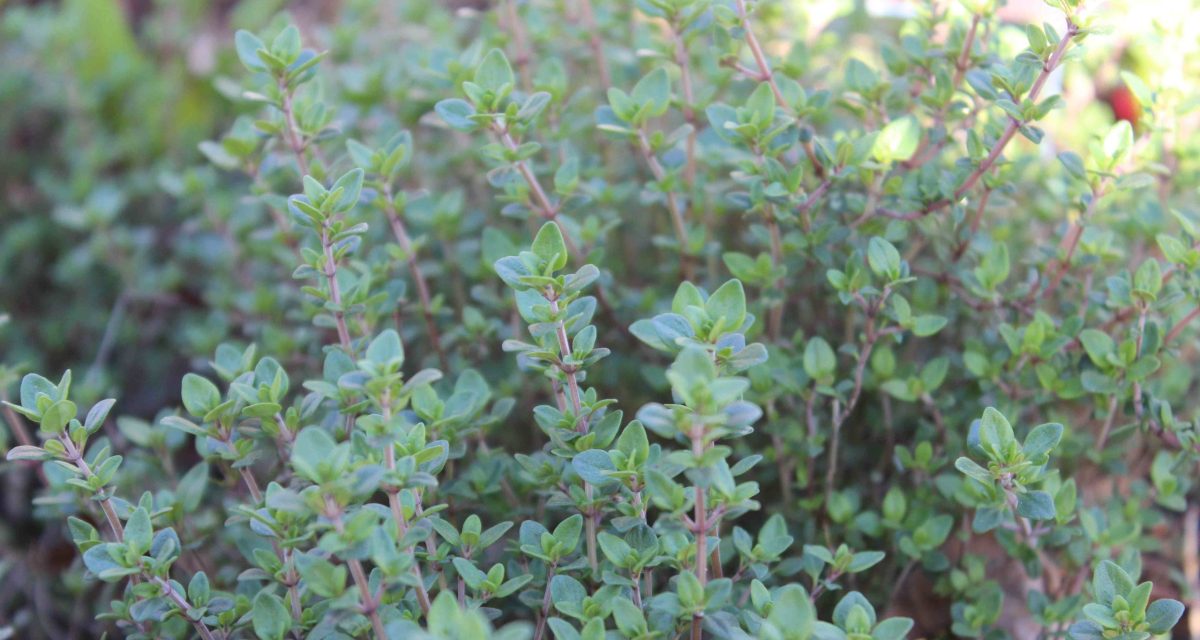
References
1. Pliny. Natural History Vol. III. Project Gutenberg, March 2019, https://www.gutenberg.org/files/59131/59131-h/59131-h.htm#Footnote_40_40
2. “Thyme”. McCormick Science Institute, https://www.mccormickscienceinstitute.com/resources/culinary-spices/herbs-spices/thyme
3. Sonja and Alex Overhiser. “10 Tasty Thyme Recipes”. A Couple Cooks, https://www.acouplecooks.com/thyme-recipes/#:~:text=Thyme%20can%20be%20used%20fresh,adds%20a%20fresh%20herbaceous%20flavor
4. Davis, Claude and Apelian, Nicole. Lost Book of Herbal Remedies. 2020, Claude Davis.
5. Dalal Hammoudi Halat, Maha Krayem, Sanaa Khaled, and Samar Younes. “A Focused Insight into Thyme: Biological, Chemical, and Therapeutic Properties of an Indigenous Mediterranean Herb”. Nutrients Journal, NIH, https://www.ncbi.nlm.nih.gov/pmc/articles/PMC9147557/#:~:text=in%20several%20studies.-,This%20is%20attributed%20to%20its%20multi%2Dpharmacological%20properties%20that%20include,%2C%20antifungal%2C%20and%20antiseptic%20activities
6. Savory Herbs Book
7. Henderson, Jayme. “4 Interesting Ways to Preserve Fresh Thyme”. The Kitchn, Jul. 2015, https://www.thekitchn.com/4-interesting-ways-to-preserve-fresh-thyme-221269
Why Choose Us
Let us now emphasize on the main benefits that customers will get by your company.
Fastest Work
An attractive line about the heading above.
High Skill
An attractive line about the heading above.
Clean Work
An attractive line about the heading above.
Proper Take Care
An attractive line about the heading above.
Let's Bring Nature Into Your Lovely House
Use these paragraphs to focus on the topic in the headline. Make sure you keep it short and attractive.
